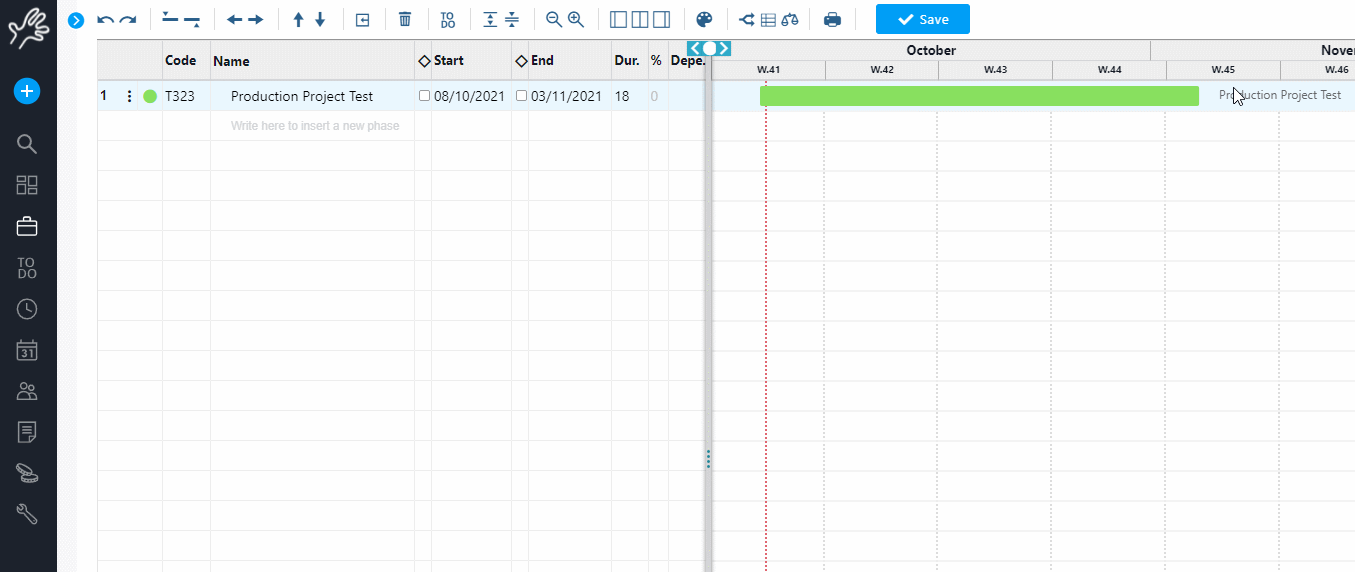Schedule management or project scheduling is the process of project time management through milestones, activities and final results, usually indicating the expected start and end dates.
A schedule or scheduling is the project or program calendar.
This shows how the work will progress over a period of time and takes into account factors such as limited resources and the uncertainty estimation.
CONTENT
This process begins with the work necessary to meet the requirements of the stakeholders.
This includes the technical / practical work that creates the results and the management activity that deals with aspects such as risk management and stakeholder management.
Through careful scheduling, project managers can ensure that each project phase is carefully planned and monitored, improving the probability of success and optimising the use of available resources.
In this article we will explore the various aspects of schedule management, which is essential to ensure the success of a project.
Definition of types of work
Some types of work can be defined much more easily than other types.
Engineering work, for example, tends to have detailed and complete specifications from the start, while some IT activities follow a more iterative approach to define what needs to be done.
The approaches to time calculation must be equally flexible.
In some cases, you can use rigorous techniques to model the work and calculate the detailed times.
In other cases, general estimates have to be made from the start, then, as the project continues, they are constantly refined thanks to the information available.
A detailed model can be used to perform “what-if” calculations and analysis to test the result of potential events.
For example: “what happens if the X resource is not available in February?” Or “what happens if there are unfavorable weather conditions in March?”.
Schedule Management: Rolling Wave Planning
The detailed high-level planning approaches usually follow the so-called “rolling wave” planning.
Short-term work is generally better defined and can be subject to more rigorous and comprehensive planning.
Long-term work is more vague and subject to changes and will be detailed working progress.
The detail window then moves along the program like a “rolling wave”, literally a rolling wave.
The most commonly used graphic planning form is the Gantt chart.
In its simplest form it uses bars on a horizontal chronological scale to show the beginning, duration and end of the various activities.

Variants of the Gantt chart can transmit all types of information adapting to the circumstances.
At the end of the work scheduling shows what has been planned and what really happened and can be an important tool in identifying and determining the lessons learned.
How to perform project scheduling
Before deepening project planning, let’s examine the basics.
You have to ask yourself three questions to start project planning:
- What must be done?
- By when will it be done?
- Who will do it?

Once you have the answers to these questions, you can start planning dates, linking activities, setting duration, milestones, and resources.
Following are the necessary steps to plan a project:
- Define activities: Using a Work Breakdown Structure (WBS) structure and a deliverable diagram, you can begin to perform these tasks and organize them by mapping the activities needed to complete them in an order compared to what is necessary;
- Making estimates: Once the activities have been defined and divided, it is necessary to determine the time and effort required to complete them;
- Determine dependencies: Tasks are not isolated and often it isn’t possible to start a new one until the previous is not completed. This is the so-called dependence of activities;
- Assign resources: The last step to finalizing the planned program is to decide which resources will be needed to perform these tasks on time.
You will have to choose the project team and the time of the collaborators will have to be planned exactly following the planned activities in the planning.
As the complexity of work increases, it becomes impractical to maintain a single detailed program.
Large-scale projects will often use wave planning in which only short-term work is shown in detail with the long-term work that is shown in summary.
As the amount of management activity increases, it may be useful to create separate delivery plans for different areas such as a communication plan, a technical plan, a marketing plan, etc.
The need for multiple plans is inevitable as the complexity of project increases.
To be effective, the project manager must ensure that similar programming policies are adopted throughout the program.
These policies can be defined in a planning management plan.
The schedule management plan has essentially three parts:
- Development planning
- Control
- Planning of changes
Schedule Management: Development planning
Development planning in schedule management is a crucial aspect for the success of a project.
In this section the procedures for the development and revision of the program are established.
The personnel responsible for the development is identified and the potential contribution of the project team members is discussed.
Written procedures for estimating asset duration and budgets, contingency levels, and resources are specified for the project.
Moreover, if the project is complex, a workforce scheduling software is very often a useful tool to have.
Scheduling check
In this section the procedures for measuring and monitoring the project program are implemented.
Throughout the project, planning deviations and costs should be known or calculated regularly, which requires an estimate of the percentage of completion of each activity according to scheduling.
At this stage it is necessary to have clear answers to the following questions:
- How will the program be measured?
- Which units will be used to measure completeness of activities?
- Who will measure it?
- How often will it be measured?
To measure project progress, it is important to clearly define measurement methodologies.
These may include techniques such as Earned Value Management (EVM), which integrates time and cost measurements to provide a comprehensive view of project progress against the project timeline.
Identifying who will be responsible for measurement is crucial to ensure the accuracy and consistency of the data collected.
Often, the project manager or a member of the quality control team may be in charge of this task. It is essential that they are trained in the use of monitoring tools and techniques.
The frequency of measurements must be established in order to provide timely and useful data for decision-making.
Measurements could be conducted weekly, monthly, or at major project milestones. The frequency should be sufficient to quickly identify and address any problems.
Scheduling changes
Normally, any change to the initial project planning must be communicated and approved.
In fact, in most cases, someone has initially approved the project budget and deadline and expects to receive results accordingly.
That person is usually called the “project sponsor“.
And it is the project sponsor together, often, to the stakeholders who must be informed and approve all the changes to the initial planning.

Thanks for the image to Watch List
Here are the basic questions to consider in this case:
- What are the appropriate reasons for a change of program?
- How much notice do you need?
- Who must approve the changes?
Project planning is probably one of the most difficult jobs of a project manager, but the coordination of delivery dates on estimates can be simplified and made more efficient when you have gained experience and when using appropriate software for schedule management.
To sum up, proper scheduling supported by effective project management software such as Twproject allows the project team to work in a coordinated manner, monitoring progress and adapting to changes in real time.
This combination of skills and technology tools not only facilitates meeting deadlines, but also improves overall project quality and stakeholder satisfaction.
What are your experiences with project scheduling? Write us your comment here.




